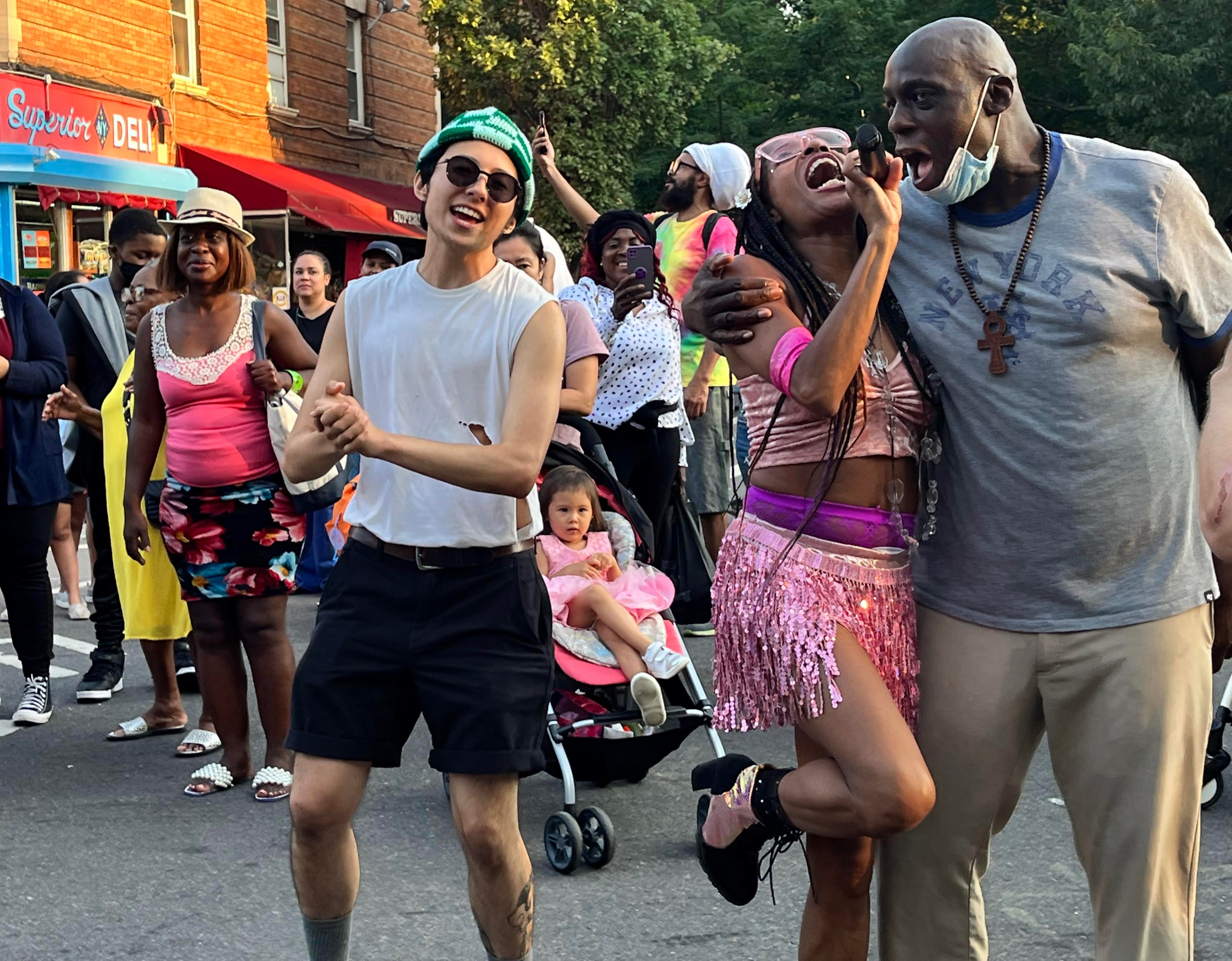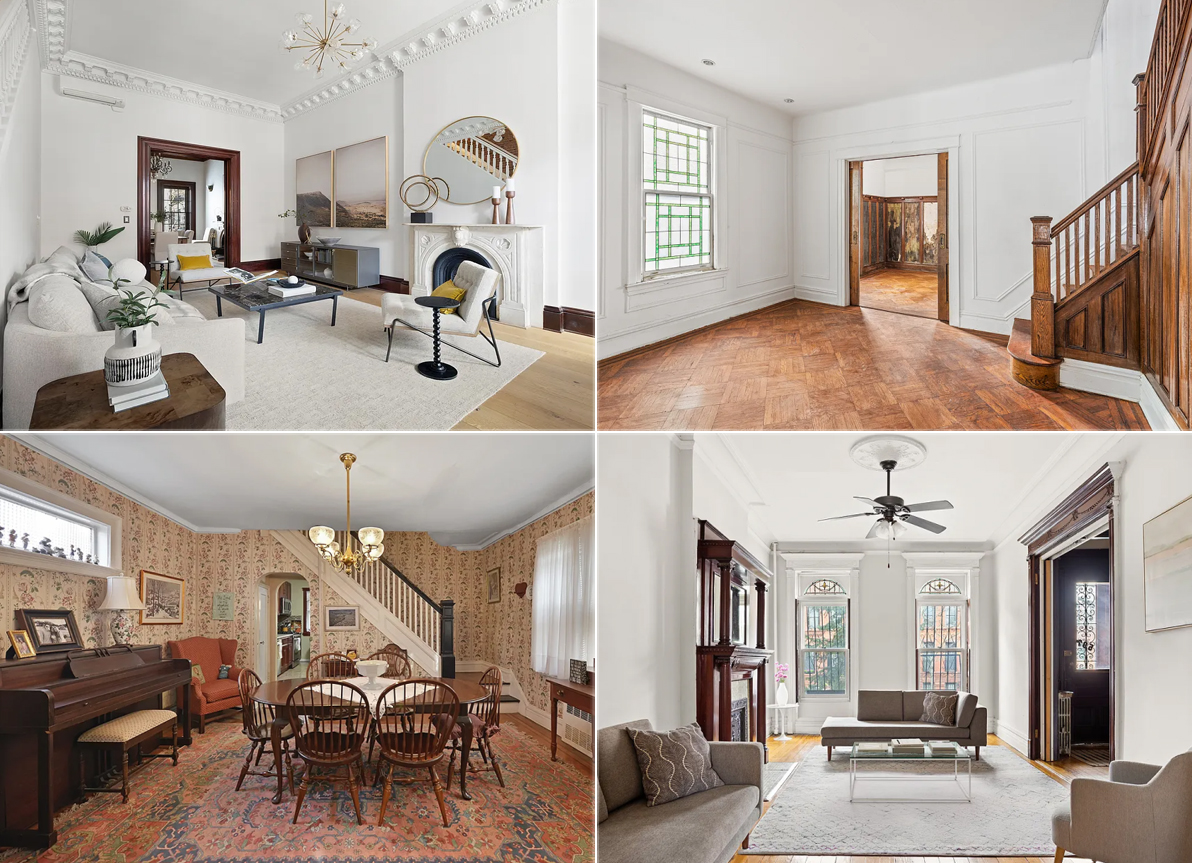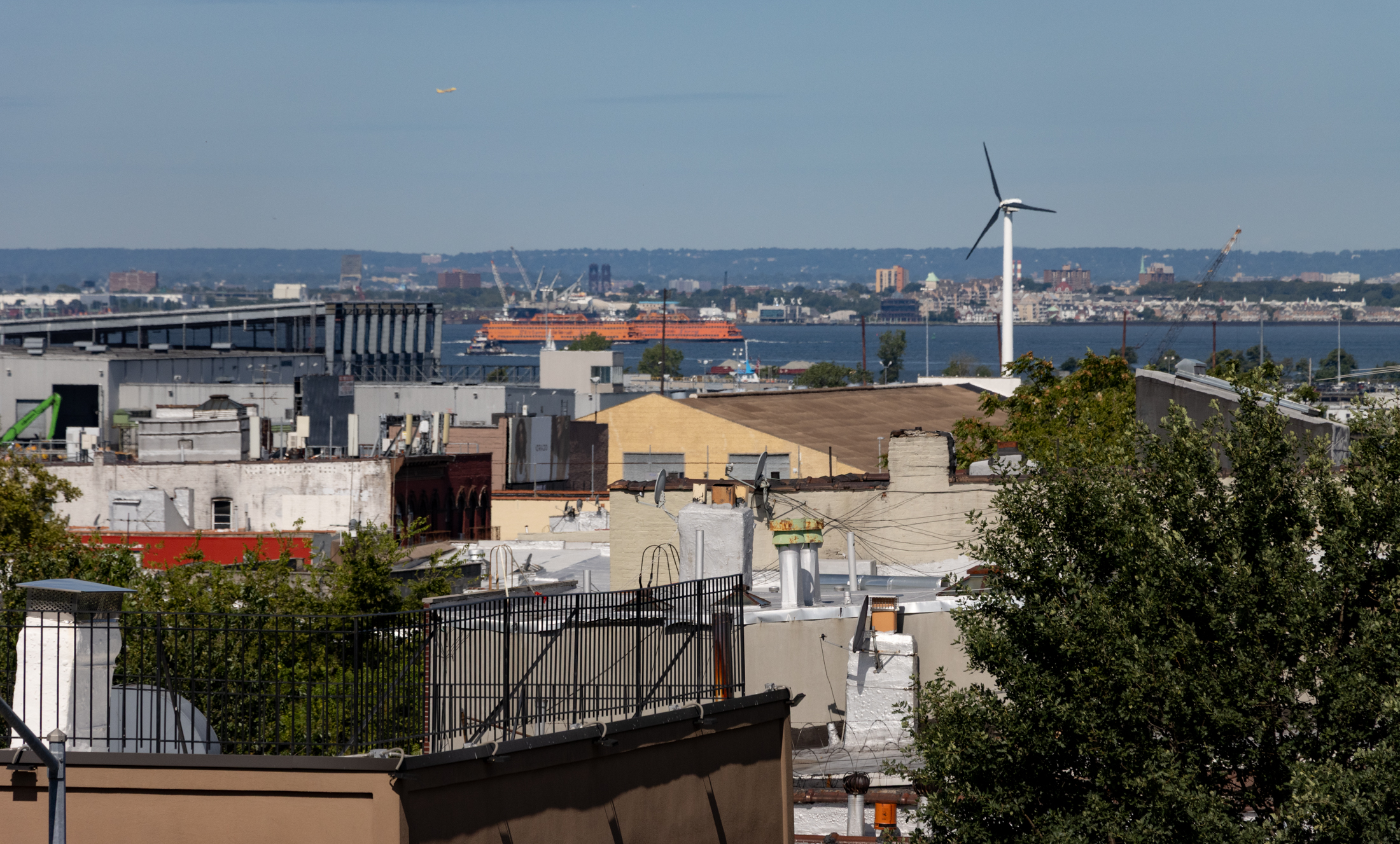Ocean on the Park Landmarking: The Details
We gave you the short version yesterday morning, but there’s more to the Landmarks Preservation Commission’s vote yesterday to approve the Ocean on the Park Historic District in Prospect Lefferts Gardens. In addition to the obvious architectural merits, the row is notable for a couple of historic reasons: (1) the land it’s on was owned…


We gave you the short version yesterday morning, but there’s more to the Landmarks Preservation Commission’s vote yesterday to approve the Ocean on the Park Historic District in Prospect Lefferts Gardens. In addition to the obvious architectural merits, the row is notable for a couple of historic reasons: (1) the land it’s on was owned in the mid-17th century by Jan van der Bilt, the progenitor of the Vanderbilt family in America; (2) one of the buildings, 193 Ocean Avenue, was owned and occupied by Charles Ebbets, owner of the Brooklyn Dodgers and developer of Ebbets Field. Those of you who’ve been following along know that the designation of the twelve 19th-century row houses was a rocky process, with two of the owners fighting the effort and one City Council Member initially blocking but then acquiescing to the landmarking. The final chapter played out yesterday at the LPC hearing, when the owner of 189 Ocean Avenue made a last-minute plea to be left out of the district. Most interestingly, the Commission held a separate vote to calendar the adjacent lot at 185 Ocean Avenue as a possible addition to the district; this is notable because a developer already tore down the beautiful old house there and started to build a new development only to run out of money in the process. As Brooklynista wrote in the comments of yesterday’s post, “Indeed, what the LPC did today was major because it signaled to preservationists and developers alike that the swinging of the wrecker’s ball may not necessarily mean the struggle to preserve a historic site has been forever lost.”
BREAKING: Ocean on the Park Houses Landmarked [Brownstoner]
Ocean on the Park: Crisis Narrowly Averted [Brownstoner]
Councilman Threatens Ocean on the Park Historic District [Brownstoner]
Big Day Coming Up for Brooklyn at Landmarks [Brownstoner]
LPC Moves Ahead With Two New Historic Districts [Brownstoner]
LPC to Consider Ocean Avenue Historic District [Brownstoner]





Not really Brooklynista… 189 through 211 Ocean Avenue in Brooklyn are landmarked buildings. That seems pretty clear.
“Ocean on the Park” is meaningless unless you know if means 189 through 211 Ocean Avenue in Brooklyn, since even “Ocean Avenue on the Park” contains a lot more than just 12 buildings.
Garment District, Flower District and Meat-Packing District actually *do* have meaning! They refer to the part of the city where those activities take/took place!!! The Historic District of Brooklyn Heights makes sense… it’s the historic part of that neighborhood! Ocean on the Park is not a historic district because (1) “Ocean on the Park” is not part of a greater neighborhood of the same name, and (2) it’s TWELVE freakin’ buildings.
You say “district” to mean a specific AREA, not a building. If a town has two banks, you wouldn’t call those two building the “Financial District.”
Yes, I’m hung up on this because the naming conventions in this town are effing ridiculous.
Realtors will not be able to say these twelve buildings are in a “Historic District” — which is an exaggeration at best and really more like a lie. These TWELVE buildings have been landmarked… the buildings are on a list. There IS NO DISTRICT! I couldn’t even justify calling this a landmarked “area.” It’s one side of one block!!
Just like the Pencil Factory (which is baffling to me in itself) — This is a few buildings! There is no DISTRICT. In fact, the landmarking doesn’t even cover the entire block… at least the Fraunces Tavern Block “District” does that.
The Landmark Commission could probably make their jobs a lot easier if they gave up on this ridiculous “district” methodology and looked at buildings. In fact, and as a side note, I have a serious problem with the restrictions put on new construction within one of these districts. Luckily, “Ocean on the Park” is barely visible on a map… so it won’t run into these issues.
Tybur6, I think maybe you are getting hung up on the term “district.” Of course, it’s not a “district” like the garment, flower, or or meat-packing “districts.” Nor is its comparable to much larger landmark “districts” in other residential neighborhoods. However, especially in the cases of “micro-districts,” like Ocean on the Park, it’s just a simple identifier, or as Bxgirl notes, a label for a specific area that is landmarked. Certainly it’s a much quicker, easier point of general reference than “Lots 189 to 211 on Ocean Avenue, between Lincoln Road and Parkside Avenues, in the borough of Brooklyn, New York.”
The original proposal for landmarking was for all 13 houses, from #189 to #211. When the developer torn down #189, the goal then became to save as much of the rest of the row as possible. If not, we feared there would be a domino effect. Lot # 189 would go to another developer and be torn down. Then, what would happen to #191? The owner of that house, who has been solidly in favor of landmarking all along, also has admitted that he might change his mind if his house were to become the end house on the row. And so on.
Further, there are architectural and historical arguments which support keeping what is left of the row intact as much as possible. From a historical perspective, it’s important to note that the entire plot of land that comprises the HD (as well as the now-excluded lot #185) was purchased by the developer, Charles Reynolds. Thus, since the turn of the century and for more than 100 years now, the row has stood together as a distinct residential development which borders the Park. Architecturally speaking, the preservationists reject the tendency of some to make the distinctions between the “worth” or “beauty” of the limestones vs. the brick houses. Instead, the argument is one of context. Or, as the LPC designation report states:
“This row of houses, with their uniform 30-foot setback, reflects an earlier age of development in Brooklyn and forms a unique enclave within a block densely occupied by apartment houses.”
BTW, the landmarking of the abandoned lot at #185, as others have noted, would not prevent future development of that lot. (I, for one, would love to see a combo community garden and underground/low-rise, contextually attractive parking facility go into that space!) Certainly, an ambitious, wealthy individual could create a fantastic, single family home on Prospect Park that fits within the context of the row. A lovely B&B or corporate condo could go there as well. (And, no, such structures would not have to be reproductions!) All landmarking would mean is that any new development going into that space would now have to satisfy not only the DOB’s rules but also the LPC’s archtectural/contextual critera. The record shows that feat is not unsurmountable and that it’s been achieved countless numbers times, all over the City.
tyburg- I love the names. I think it brings a focus on what makes this group so special. Same with the Eberhard district, or Fraunces tavern district. It’s not stupid- its labeling.
Brooklynista — I just find it very strange that these 12 buildings have been given a separate “district.” It’s 12 buildings on a block in a bigger neighborhood… exactly ONE BLOCK separating it from “Prospect-Lefferts Gardens.”
These are great example of history and it’s excellent that they have protection… but inventing a ridiculous name that sounds like a vacation destination for a “district” comprised of 12 buildings. That’s stoopid.
Yeah, it’s a small thing — but small things matter when it comes to completely political and emotional decisions like expanding landmark protection. Why can’t you just list a *building* or set of buildings rather than creating a ridiculous nomenclature for them.
This reminds me of the Eberhard Pencil Factory “District” or the Fraunces Tavern Block “District” on Pearl Street.
This is great. But I’ll admit I’m confused about also asking for landmarking on #185. It’s hard to voice support one way or another not hearing what it would mean and what would be allowed to be built if it’s landmarked. What would be the rules or guidelines on that? Would an owner have to build a reproduction brick or limestone one or two family house? That doesn’t seem realistic financially for somebody and I’m not sure a empty, blighted lot is preferable over an 8-unit condo if it’s done tastefully.
Hard to see how HD designation would have any impact on shared driveway liability. My personal view, having heard many stories from credible people about those folks, is that they are completely off their rocker.
Brooklynista- my congrats- your hard work and passion finally got the job done! It’s such a lovely row of houses, and the view of the park is such a plus. Enjoy!
“The gist of it is that they have a fear of increased liability for the common driveway if the apartment building is erected.”
That would be significant if it proved to be accurate. Perhaps their lawyers have advised them this is the case. It’s worth being sure about. Thanks Brooklynista for your post.